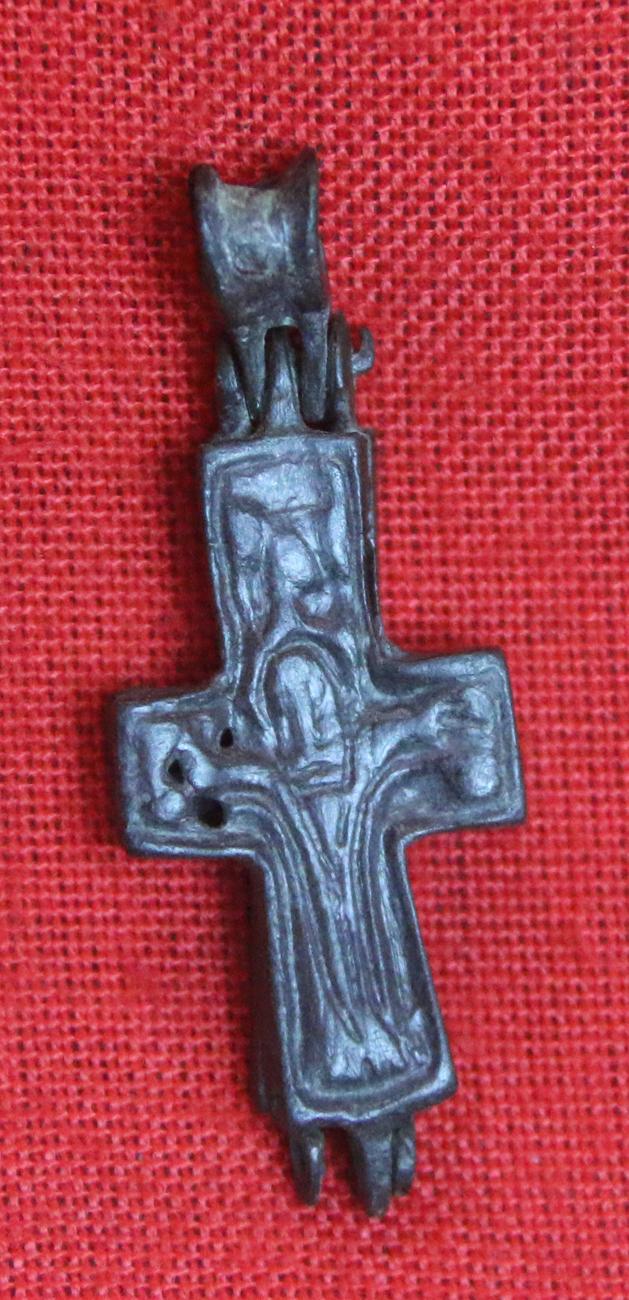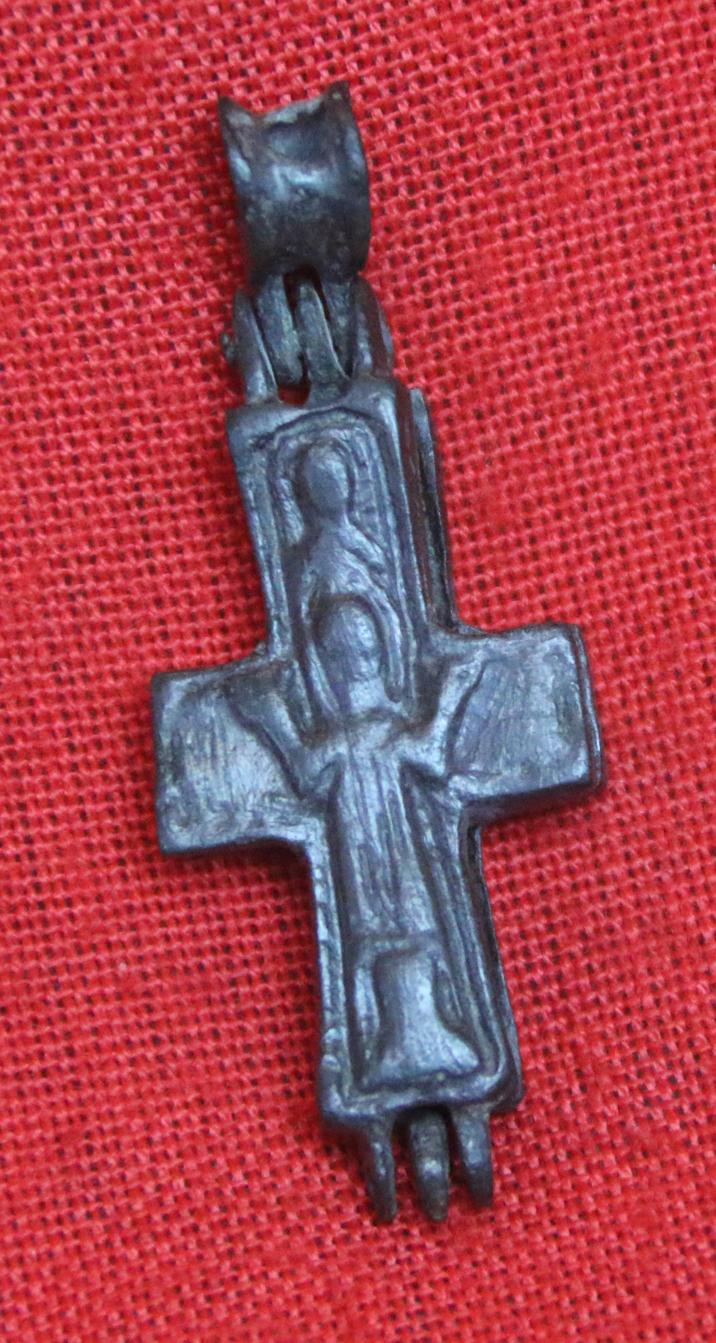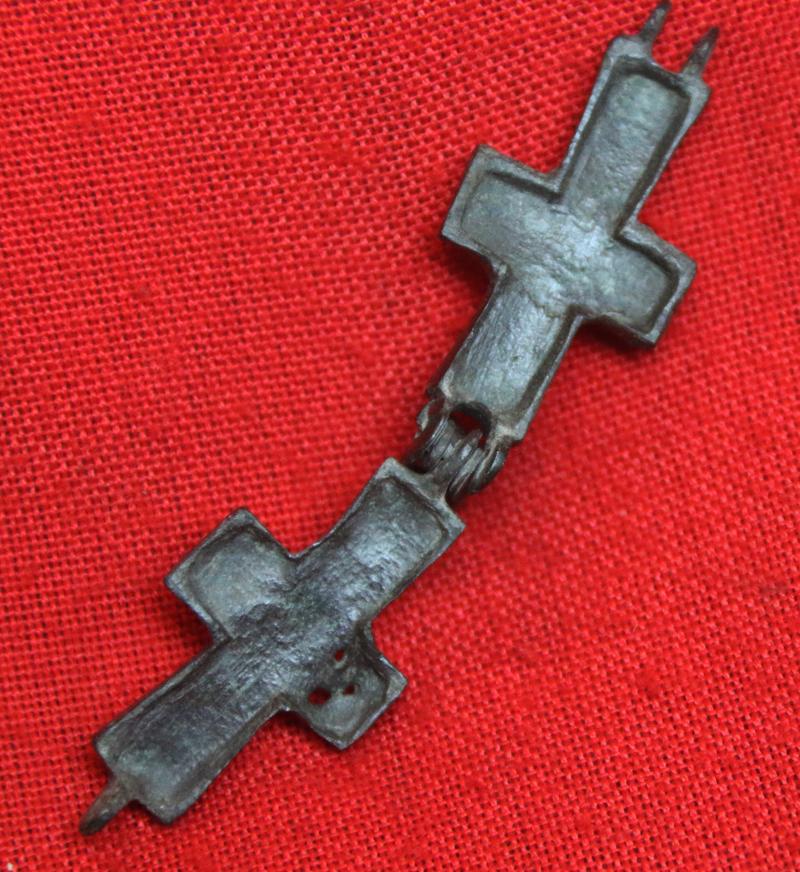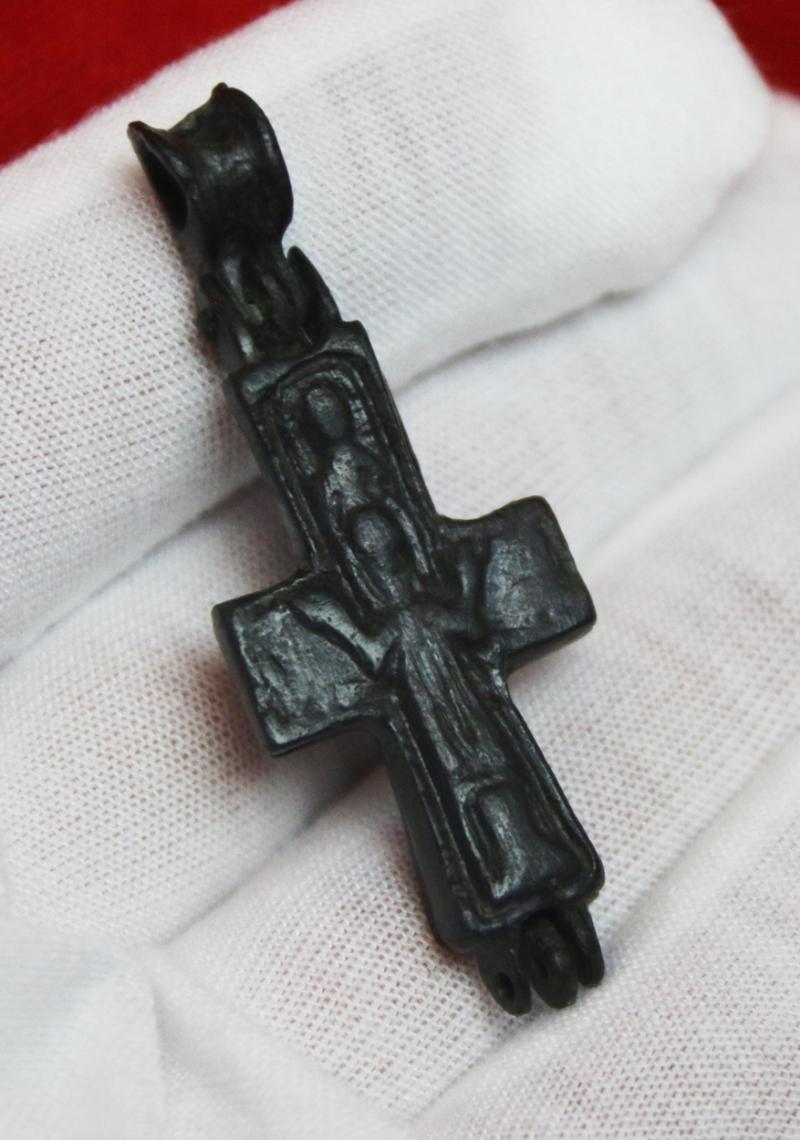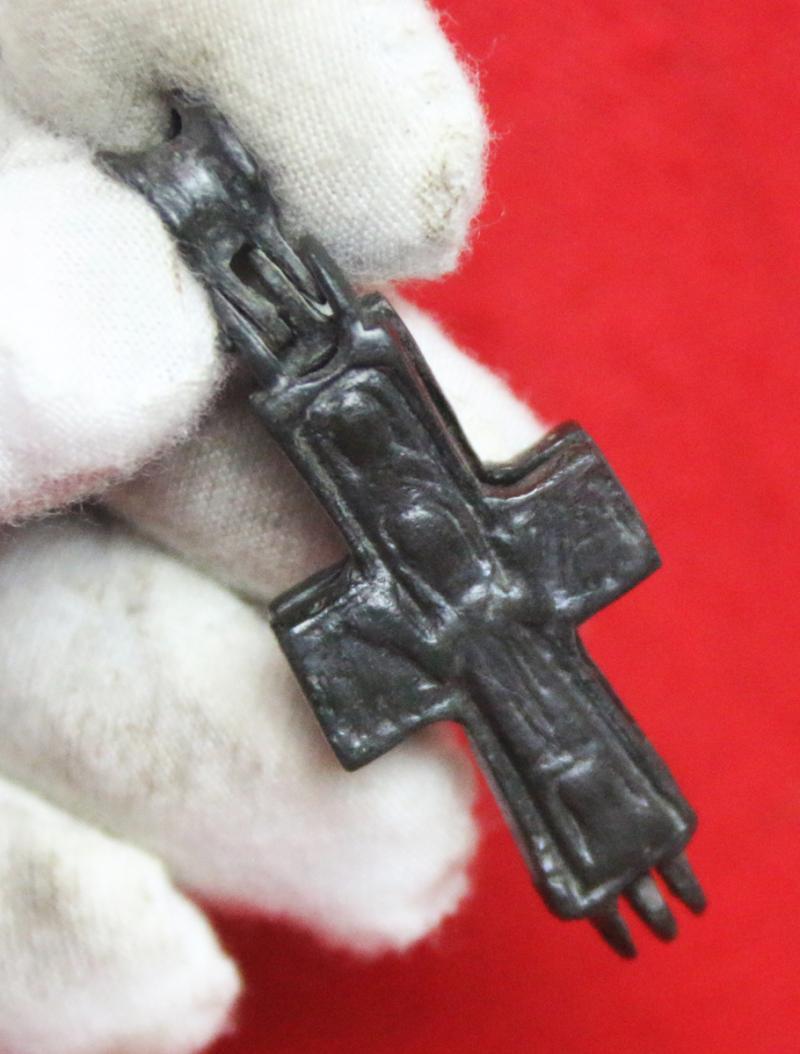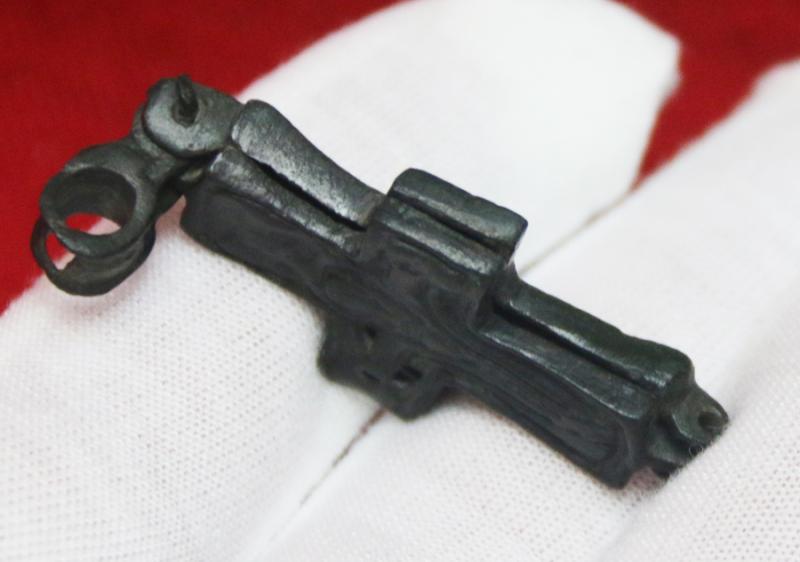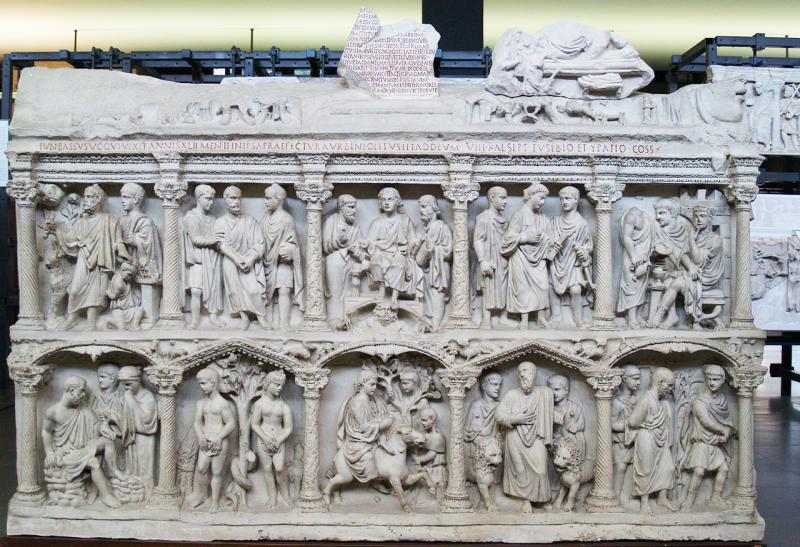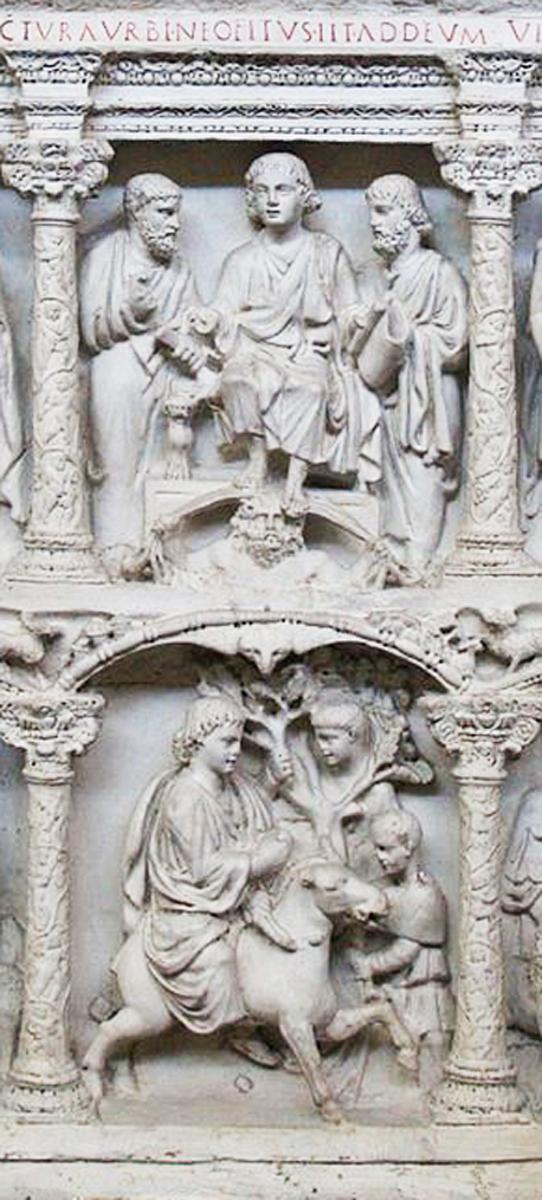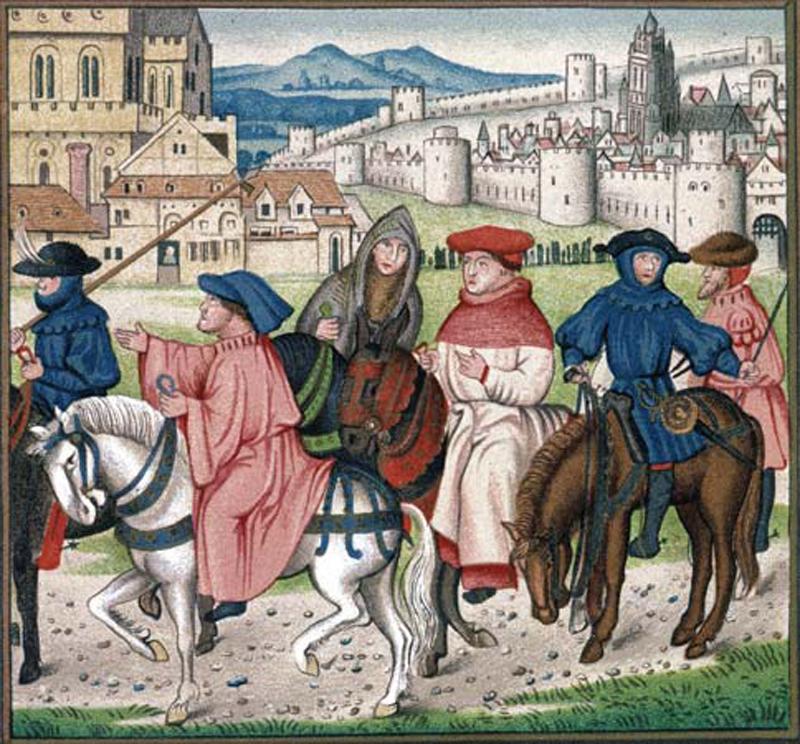An Original Good Size, And Absolutely Stunning, An Ancient Roman Bronze Encolpion Cross, Likely a High Status Pilgrim's or Bishop's Pendant Approximately 1400 Years old
A very early original Christian Roman reliquary from the Eastern Roman Empire of Constantinople, with an absolutely stunning bronze patination.
This reliquary cross bears many icons from Christian iconography: on the main side, the crucified Christ, dressed in the colobium. The hollow portion formed inside the cross was intended for the sacred relic that the faithful would have worn around the neck. the reverse side is Christ in the orans pose. The custom of carrying a relic was largely widespread, and many early bronze examples were later worn by the Crusader knights on their crusades to liberate the Holy Land. Relics of the True Cross became very popular from the 9th century, and were carried in cross-shaped reliquaries like this, often decorated with enamels, niellos, and precious stones. The True Cross is the name for physical remnants from the cross upon which Jesus Christ was crucified. Many Catholic and Orthodox churches possess fragmentary remains that are by tradition believed to those of the True Cross. Saint John Chrysostom relates that fragments of the True Cross were kept in reliquaries "which men reverently wear upon their persons". A fragment of the True Cross was received by King Alfred from Pope Marinus I (Anglo-Saxon Chronicle, year 883). An inscription of 359, found at Tixter, in the neighbourhood of Sétif in Mauretania, was said to mention, in an enumeration of relics, a fragment of the True Cross, according to an entry in Roman Miscellanies, X, 441.
Fragments of the Cross were broken up, and the pieces were widely distributed; in 348, in one of his Catecheses, Cyril of Jerusalem remarked that the "whole earth is full of the relics of the Cross of Christ," and in another, "The holy wood of the Cross bears witness, seen among us to this day, and from this place now almost filling the whole world, by means of those who in faith take portions from it." Egeria's account testifies to how highly these relics of the crucifixion were prized. Saint John Chrysostom relates that fragments of the True Cross were kept in golden reliquaries, "which men reverently wear upon their persons." Even two Latin inscriptions around 350 from today's Algeria testify to the keeping and admiration of small particles of the cross. Around the year 455, Juvenal Patriarch of Jerusalem sent to Pope Leo I a fragment of the "precious wood", according to the Letters of Pope Leo. A portion of the cross was taken to Rome in the seventh century by Pope Sergius I, who was of Byzantine origin. "In the small part is power of the whole cross", says an inscription in the Felix Basilica of Nola, built by bishop Paulinus at the beginning of 5th century. The cross particle was inserted in the altar.
The Old English poem Dream of the Rood mentions the finding of the cross and the beginning of the tradition of the veneration of its relics. The Anglo-Saxon Chronicle also talks of King Alfred receiving a fragment of the cross from Pope Marinus (see: Annal Alfred the Great, year 883). Although it is possible, the poem need not be referring to this specific relic or have this incident as the reason for its composition. However, there is a later source that speaks of a bequest made to the 'Holy Cross' at Shaftesbury Abbey in Dorset; Shaftesbury abbey was founded by King Alfred, supported with a large portion of state funds and given to the charge of his own daughter when he was alive – it is conceivable that if Alfred really received this relic, that he may have given it to the care of the nuns at Shaftesbury
Most of the very small relics of the True Cross in Europe came from Constantinople. The city was captured and sacked by the Fourth Crusade in 1204: "After the conquest of the city Constantinople inestimable wealth was found: incomparably precious jewels and also a part of the cross of the Lord, which Helena transferred from Jerusalem and which was decorated with gold and precious jewels. There it attained the highest admiration. It was carved up by the present bishops and was divided with other very precious relics among the knights; later, after their return to the homeland, it was donated to churches and monasteries.
We show in the gallery several carved marble Christian scenes from the tomb of the administrator of Rome from the 4th century Imperial Roman Empire, In his role as prefect, Junius Bassus was responsible for the administration of the city of Rome. When Junius Bassus died at the age of 42 in the year 359, a sarcophagus was made for him. As recorded in an inscription on the sarcophagus now in the Vatican collection, Junius Bassus had become a convert to Christianity shortly before his death. 52 mm
Code: 24420

